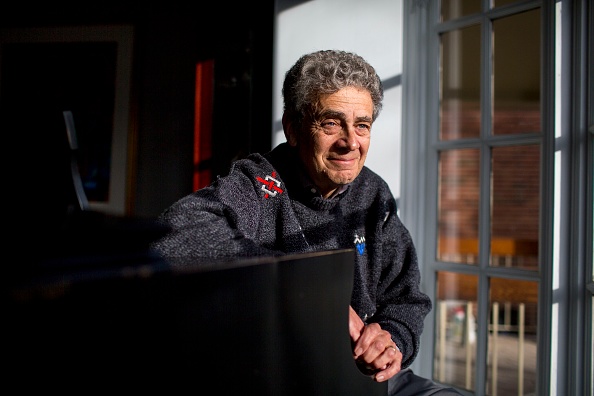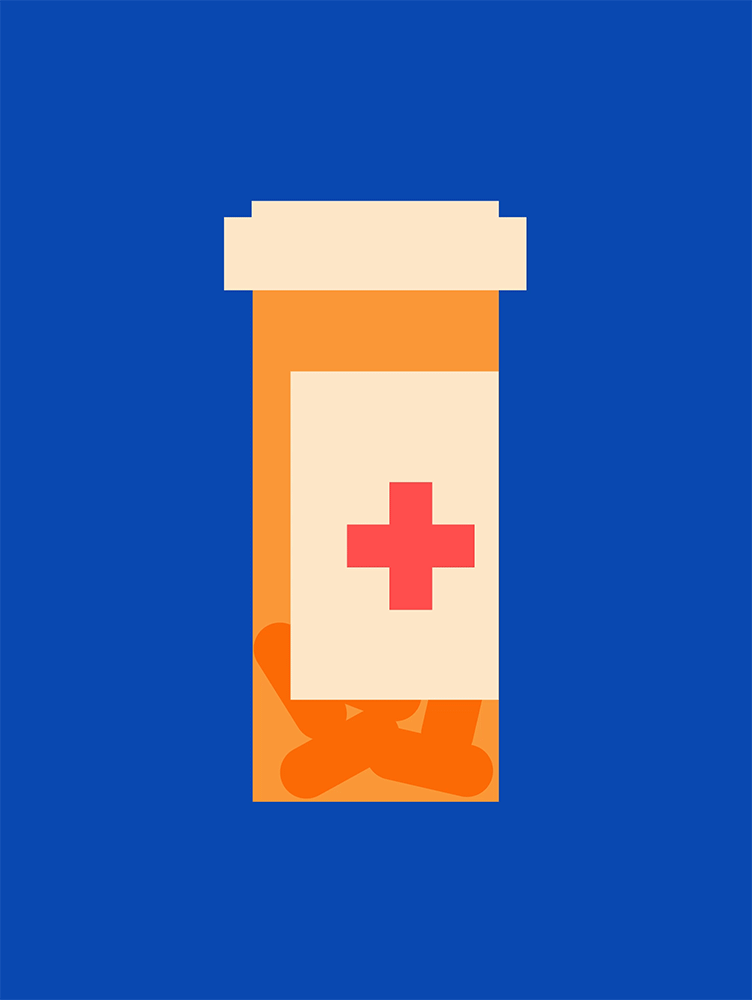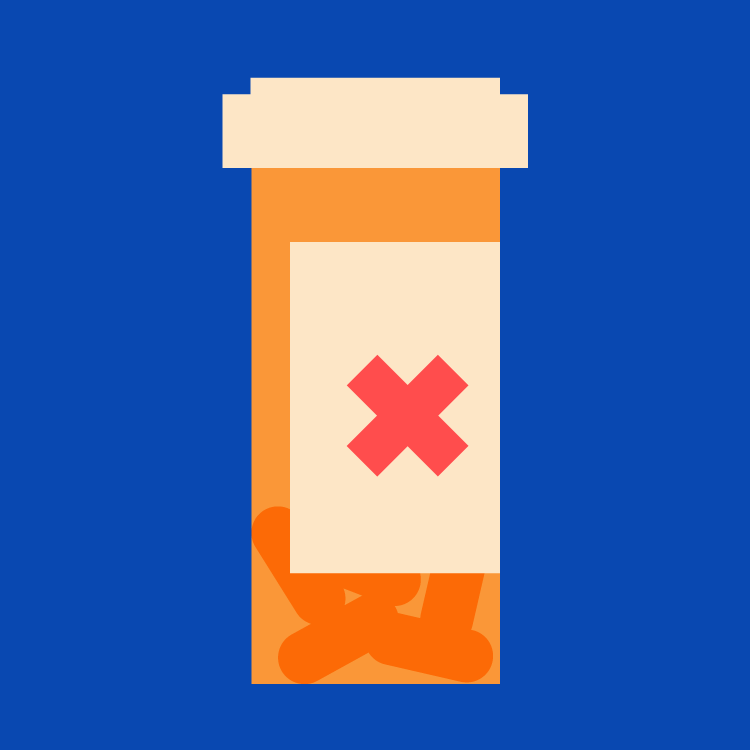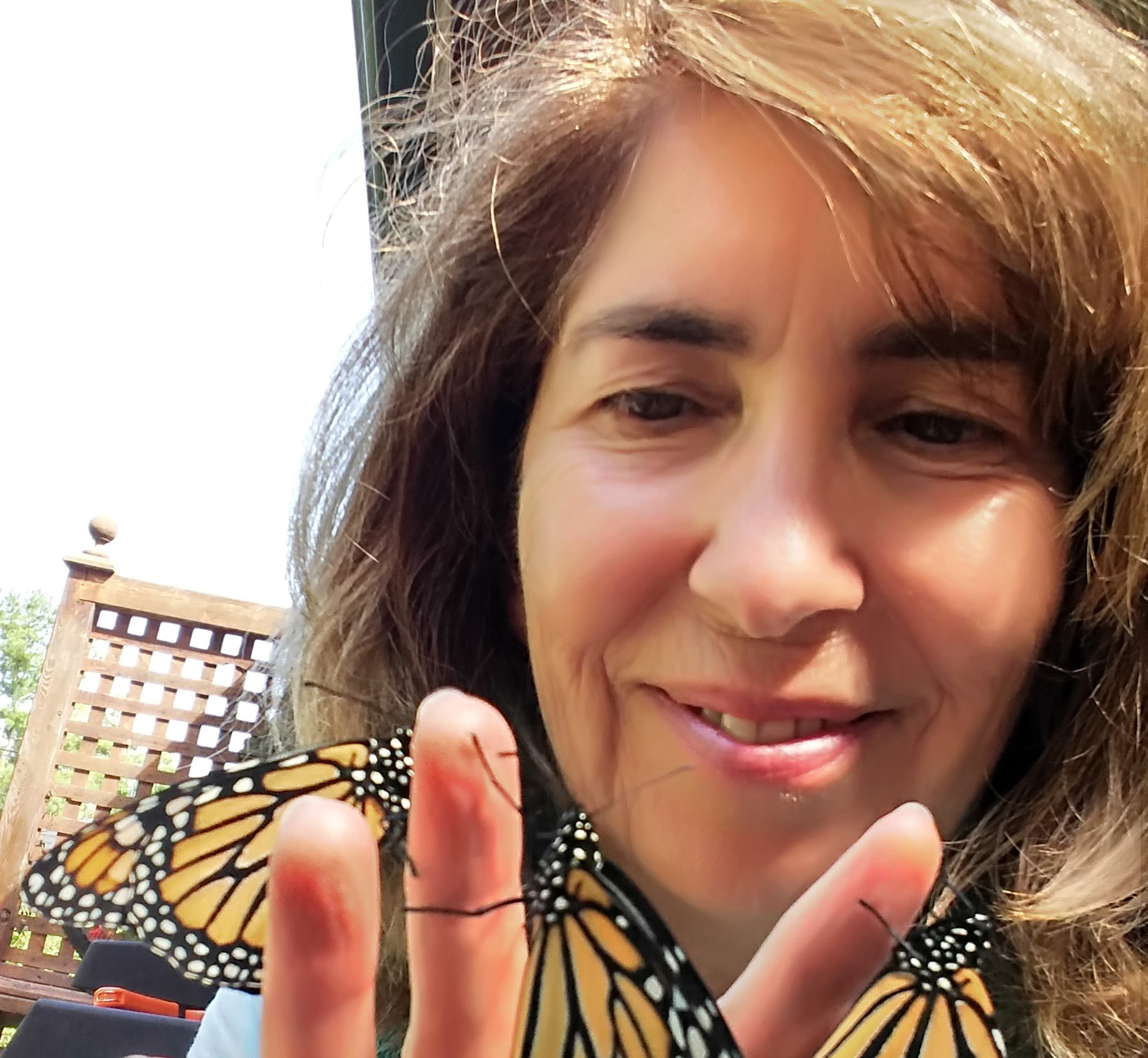Over the past couple of decades, physician Sheldon Fine of Toronto has had plenty of patients on opioid medications. But when he had to go on opioids himself – and then try to get off them – he was surprised by how little he’d really understood about his patients’ experiences with pain management. “My use of opioids gave me a better understanding of the issues patients face in both taking meds and reducing their dependency,” says Fine, 67. “The experience of dealing with an illness at a personal level offers a unique perspective that cannot be fully understood as a health-care provider.”
Fine (MD 1975) went on opioids in March 2017. After fracturing vertebrae in his upper back from a fall on the ice, he had a complex surgery to remove a large benign growth on his right lung. For the resulting severe post-surgical pain and excruciating neuropathic neck pain, he was prescribed a maximum daily dose of 85 mg of hydromorphone, the equivalent of 510 mg of morphine, which he took for five-and-a-half months.
The drugs helped him cope with the pain but also gave him nasty side-effects such as fatigue, constipation, loss of appetite and social withdrawal. Motivated to get off the drugs as soon as he could, he was referred to the Transitional Pain Service at Toronto General Hospital, part of the University Health Network. The multidisciplinary program, which includes physiotherapy, exercise regimens and mindfulness training, helps patients taper off opioids. Even with his medical background, his solid family support and a personalized program, Fine found the process challenging. It took a few months and involved withdrawal symptoms including sweating, jitteriness and other flu-like feelings. “It was very hard,” says Fine, now off all opioids for 16 months, back to work and running half-marathons. “I could see how it would be very easy to misuse the drugs or develop a long-term dependency.”

The public face of Canada’s opioid crisis is someone who has overdosed on illicit fentanyl. Far more common but much less understood is the pain patient on legal opioids, taking them as prescribed. In 2016, there were 21.5 million prescriptions dispensed for opioids in this country, including to approximately one in five Canadian seniors. Canadians are among the highest per-capita consumers of opioids in the world.
Opioids – the most common of which are morphine, hydromorphone, codeine, fentanyl, oxycodone and tramadol – are the best drugs we have for severe short-term acute pain, such as from serious burns or fractures. They can also be invaluable in easing the suffering of some cancer patients and those in end-of-life care. But there’s limited scientific evidence for their usefulness in long-term chronic non-cancer pain, such as from osteoarthritis or fibromyalgia. In fact, acetaminophen, ibuprofen and other non-steroidal anti-inflammatory drugs work better than opioids for chronic back pain and arthritis and have fewer side-effects, according to a 2018 U.S. government-funded study from the Minneapolis VA Health Care System. And Washington State University researchers reported in July that after stopping long-term opioids, patients said their non-cancer chronic pain didn’t get worse; in fact, it either stayed the same or got a little better.
While the focus of the opioid crisis has been on deaths from overdose – there were almost 4,000 in Canada in 2017 – harms that don’t make the headlines include sedation, dizziness, falls, broken bones, head injuries, motor vehicle collisions, osteoporosis and hormone disruption that can cause reduced sex drive in men and infertility in women. In some patients, a phenomenon called opioid-induced hyperalgesia increases sensitivity and, paradoxically, actually makes pain worse. New research – co-written by U of T medicine professor David Juurlink, U of T medical student Graham Mazereeuw and Dr. Mark D. Sullivan of UW Medical Center in Seattle – found that, for some patients, opioids may be a contributing factor in depression. Other research shows they may also increase the risk of premature death, including from heart disease.
It’s in our best interests to reduce opioid numbers and dosages. But while prescribing opioids is easy, deprescribing – reducing, stopping or not prescribing in the first place – is a different story. There are no official guidelines for deprescribing. That means many physicians are winging it, sometimes withholding medication when it’s needed or weaning off patients too aggressively. Many patients resist, seek the drugs elsewhere or wean themselves off, with dangerous consequences.

Opioids can’t be suddenly stopped or drastically reduced, because of the physical dependence that patients develop. And of the people who use opioids for weeks or months, 100 per cent will develop a physical dependence, says Andrea Furlan, a U of T professor of medicine and a senior scientist and staff physician at the Toronto Rehabilitation Institute, part of the University Health Network. “It develops in a few days.”
Physical dependence is different from addiction. Less than 10 per cent of people who use opioids daily will develop a true addiction, or opioid use disorder, which involves uncontrollable cravings, the compulsive use of the drugs and an inability to stop on their own. But the much more common experience of physical dependence occurs when the body habituates to a level of opioid and, if that isn’t provided, suffers withdrawal.
As Fine discovered, withdrawal can resemble a wretched case of the flu, with sweating, restlessness, anxiety, palpitations, insomnia, body aches, runny nose, diarrhea and stomach cramps. Weaning too fast or stopping cold turkey may cause an especially horrendous withdrawal that may last for weeks, depending on dosage and how long one has been on opioids. “Patients say they feel like they’re going to die,” Furlan says.
Health-care providers must be much less liberal in prescribing opioids in the first place, she says. For acute, uncomplicated pain, surgeons, ER doctors, nurse practitioners, walk-in clinics and dentists should generally prescribe no more than a three-day supply, and only rarely seven days. They have to be especially careful with patients at higher risk of an opioid-use disorder; risk factors include a history of substance use and psychological illness such as depression or anxiety.
Health practitioners and pharmacists need to explain to patients when they’re getting an opioid. Some patients may not realize that the innocuous-sounding “pain patch,” the over-the-counter cough medicine with codeine, and the Tylenol No. 3s used after their root canal treatment are all opioids. (It is now mandatory to have a warning sticker on the bottle in Canada.) David Juurlink – a professor in the department of medicine at U of T and head of the division of clinical pharmacology and toxicology at Sunnybrook Health Sciences Centre in Toronto – says his eldest child was given a prescription for codeine after a wisdom teeth extraction last summer, but, instead, “We opted to use ibuprofen, which worked fine.”
Young patients are at higher risk than older patients of developing an opioid-use disorder
While there’s been much discussion in Canada about the dangers of cannabis on the teenage brain, Juurlink says, “I think we should be even more worried about the effects of opioids on the teenage brain.” Young patients are at higher risk than older patients of developing an opioid-use disorder. As for tramadol, which works as an antidepressant and is metabolized to an opioid in some patients, Juurlink says there is a common misconception that it’s not a true opioid. Not only is it, but it’s classified as a controlled substance in all 50 states and may soon be similarly regulated by Health Canada.
For patients on long-term high doses – above 90 mg of morphine equivalent a day – Juurlink says, “As much as I think high-dose opioid therapy is a bad idea, the only thing worse is abruptly lowering the dose, which can seriously destabilize a patient who is opioid-dependent. It’s far better to taper the dose gradually – over months or perhaps even years – proceeding at the patient’s pace.” In the absence of official guidelines for deprescribing, he says, “the most important guideline is to go at the patient’s pace. I can’t stress this enough – it’s a marathon, not a sprint. The slower the better.” Some pain clinics use a buprenorphine/naloxone medication to ease symptoms once the patient is off opioids and in withdrawal.
Patients may well be resistant, especially when withdrawal initially makes them feel worse and fools them (and sometimes their doctors) into believing their original pain is roaring back. Furlan tells of a 78-year-old pain patient who refused to even consider lowering her dose of almost 1,000 mg of morphine equivalent a day. So Furlan said, “OK, I’ll just provide you with some information,” then booked regular visits with her. “We tapered her to almost 10 per cent of her original dose.” With far fewer side-effects, she’s reporting a better quality of life.
Furlan and Juurlink believe that most people on high doses should be tapered (“with compassion, not force,” says Furlan). Hance Clarke, U of T professor of anesthesia, director of pain services at Toronto General and director of the Transitional Pain Service that helped Fine, also believes that tapering patients off of high doses is a good solution, but “not all individuals need to arrive at a magic, safe dose of 90 mg a day. I encounter many patients that have destabilized in reaction to the 2017 [opioid prescription] guidelines.” He adds: “For example, taking a stable, functioning insurance-agent mother of three children who’s on 200 milligrams a day and has been prescribed this for 12 years, and in one visit her physician forces her to begin to reduce her medication or gives her 30 days to find a new prescriber… this has a destabilizing effect on her life and increases her stress levels and struggles on a daily basis.”
Where do we go from here? Furlan wants chronic pain patients to know that while perhaps nothing will take their pain away entirely, non-drug therapies such as physical activity, meditation and healthy habits such as good sleep hygiene can make them masters of their own care. She also encourages Ontario physicians to check out Project ECHO, a regular interactive virtual classroom on managing chronic pain.
Juurlink would like to see non-prescription codeine products removed from Canadian pharmacies, access for all doctors and pharmacists to a patient’s full medication profile (available only in some provinces, such as British Columbia), more supports and supervised injection sites, decriminalization and less stigma for people with opioid-use disorder and those with chronic pain who are taking opioids.
Clarke recommends mandatory opioid training for prescribers and wants to consider government coverage or allocated funding for proven non-drug treatments such as physiotherapy, acupuncture, yoga, massage therapy and psychological services. He also wants a national pain, addiction and opioid-prescribing task force that includes the often-forgotten voice of the pain patient.
Their message to all prescribers: think twice before you start somebody on opioids. As Clarke says, one of the most important points highlighted in the 2017 guidelines on prescribing opioids for chronic non-cancer pain is that there is a place to stop (ie. 90 mg) if you do start a patient on opioids. He adds: “Similar to a pilot, if you take off with passengers in your plane, you better know how to land it safely.”




8 Responses to “ Flip the Script ”
I was prescribed opioids once. I guess I'm lucky, as they made me sick and I vomited every time I took them. They never relieved my pain and I didn't get high off of them. They were essentially useless and I ended up dropping them off at the pill disposal at the pharmacy.
What helped me the most was stretching regularly. It was painful during stretches but for hours afterwards the pain wouldn't be so bad. These days, when I have back problems, I start stretches right away and the issue doesn't seem to progress.
I'd like to address the article's suggestion that overprescribing opioids to patients is related to significant elevation of risk for opioid addiction or mortality.
Analysis of CDC published data shows that there is no cause-and-effect relationship between the rates of physician prescriptions for opioids and opioid-related overdose deaths from all sources. The contribution of medically managed opioid pain relievers is so small that it gets lost in the noise.
Likewise, the demographics of chronic pain and those of addiction are almost entirely separate. In the U.S., people over 50 receive more than 2.5 times the number of opioid prescriptions as people under 30. But the overdose mortality rate in people over 50 is the smallest of any age group and has been stable for 17 years, even as mortality in the youngest age group has skyrocketed.
Studies published in the Journal of the American Medical Association and BMJ demonstrate that the risk of diagnosis for opioid abuse disorder is about 0.6 per cent in post-surgical patients. Likewise, incidence of long-term chronic prescription of opioids in 11 common surgical procedures varies from 0.6 per cent to 1.7 per cent, and many of these prescriptions are for chronic pain from failed procedures, not from any propensity toward addiction.
I have been a chronic pain patient for more than 21 years because of four failed surgeries. The last two left me in much more pain post-op than pre-op. I have needed opioids, along with several other medications, to have some measure of quality of life. I also do physical and occupational therapy, and use bio-feedback and hot or cold packs. I've tried acupuncture and have received counselling for almost 17 years.
Patients who live with severe chronic pain want to be able to enjoy life to the best of our ability, within our limits. We want to be able to enjoy our family, our friends and be a member of society. Is there something wrong with that?
In cases where a patient struggles constantly with pain to the point that it has ruined their life, it's only sensible -- and compassionate -- to relieve their pain by whatever means required, including high-dose opiates (though steps should also be taken to identify what's generating the pain and then correcting it).
We must acknowledge that pain can sometimes be so severe and unrelenting that some people take their own lives to end the suffering. Opiate prescriptions may offer the only reliable relief. Shame on us all if we do not attend to those in such desperate need.
We should not confuse incurable, life-long pain with acute pain, such as that caused by a tooth extraction or surgery. I have Complex Regional Pain Syndrome, non-length-dependent small-fibre sensory neuropathy and neurogenic thoracic outlet syndrome -- all of which cause incurable and intractable pain. I have tried acupuncture, meditation, epidural injection, ketamine, physical and occupational therapy and so on.
There simply are no effective alternatives other than opioids for the millions of us who suffering from these diseases. We are never pain-free, but with opioids we are able to have a few hours of improved functioning a day. We have all attempted alternatives without success before making the decision -- with the guidance of our physicians -- to be treated with opioids. Please stop lecturing, stigmatizing and judging us.
Serious, chronic pain is a life-altering problem for millions of people in Canada and the U.S. It was not the intent of this article to minimize the difficulties these patients face or suggest that they should not have access to medications that help them. Our aim was to raise important questions about how and why opioids are prescribed, the dose that’s prescribed and for how long.
For readers interested in finding out more about this important and complex issue, we recommend the 2017 Canadian Guideline for Opioids for Chronic Non-Cancer Pain.
I am 60 years old and have been a pain management patient for 25 years. I've tried twice with psychologists to discontinue the use of opioid medication. Both attempts failed. When I was told that my medication was to be reduced at the start of 2017, I was worried. The methodone I have used for the last 20 years was reduced by 80 per cent over a period of eight weeks -- from 500 milligrams of morphine equivalent (MME) to 90 MME. I was told that I had all the time I needed to "adjust" to the lower dose. I tried to keep working, moving, exercising.
Based on my experience, I am not sure that the body can always manage pain on its own, even with the best help available. (Not everyone can afford a psychologist.) Now, after two years on a lower dose, I have applied for disability benefits, spent my life savings because my doctor visits are no longer covered by insurance, and I am still waiting to "adjust" to 90 MME.
The "experts" at the Centers for Disease Control and Prevention (CDC) who wrote the 2016 guidelines for opioid prescribing cannot possibly have experienced intractable pain themselves or understand the insanely difficult challenge of "adjusting" to 90 MME. Patients who were prescribed pain medication decades ago for good reasons should not have to endure inhumane degrees of pain.
Thank you for this article. My experience of tapering opioids was the complete opposite: a slow, methodical reduction of 5 mg/month that created very few, hardly felt side effects. My daily dosage was similar to Dr. Fine's.
I think that what we are learning about opioids in this highly charged atmosphere is that each person will react differently to usage and tapering. Various licensing bodies wish a one-size-fits all approach because they are functionaries to their core. But it doesn't work that way.
If a person is managing their pain well and opioids are part of the plan, there is absolutely no reason to interfere.